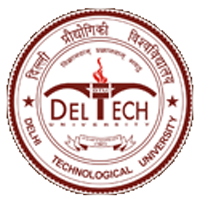Please use this identifier to cite or link to this item:
http://dspace.dtu.ac.in:8080/jspui/handle/repository/21593| Title: | PERFORMANCE ANALYSIS OF IMAGE FUSION ALGORITHMS FOR BIO-MEDICAL APPLICATIONS |
| Authors: | GHOSH, TANIMA |
| Keywords: | IMAGE FUSION ALGORITHMS BIO-MEDICAL APPLICATIONS IMAGE PROCESSING MEDICAL IMAGE PROCESSING |
| Issue Date: | Dec-2024 |
| Series/Report no.: | TD-7847; |
| Abstract: | Image processing plays a vital role in various medical applications, including image-guided surgery, disease progression studies, medical diagnostics, and radiotherapy. Extracting clinically significant and useful information from medical images is crucial across these applications. Medical images provide unique insights into the internal organs of the body. However, the information obtained from a single-modality medical image is often limited and may not fully meet the needs of an accurate clinical diagnosis. To address this limitation, multimodal medical image fusion has emerged as a promising solution, offering information about an organ from different perspectives. Medical image analysis involves four key steps: 1. Filtering the image 2. Segmenting the relevant regions 3. Extracting features and 4. analyzing these features using a pattern recognition system or classifier. Image preprocessing is a critical step before fusing images from different modalities for reduction of unwanted noise to improve the visual quality of the image. Image denoising after fusion is also crucial for improving the quality, interpretability, and usefulness of the fused images in medical diagnostic and treatment planning. The primary objective is to develop multimodal medical image fusion algorithms that enhance visual details for improved clinical diagnosis and to address the problem of requirement of large dataset and computational complexity. Hence, we developed Efficient image fusion models using Dense-ResNet on BraTs 2020 and innovative fusion rules on BraTs 2015, 2018 and Harvard Medical School Brain Dataset. Also, the performance analysis of DWT based image decomposition has been done along with the proposed energy-based coefficient enhancement. Denoising of medical images is an essential preprocessing technique for enhancing the performance of the fusion model. Hence, we developed AMT-DWT (Averaging of multiple technique–Discrete Wavelet Transform) based pre-processing. In order to increase the clinical applicability of medical images for diagnosis, custom CNN based denoising has been utilized after fusion. The proposed model is benchmarked against a recent CNN-based image fusion model, TDAN (Two Level Dynamic Adaptive Network), as well as several state-of-the-art image fusion models using the CT-MRI images from the Harvard Medical School Brain dataset. The proposed model outperformed the state-of-the-art image fusion models based on the performance metrics PSNR, RMSE, SSIM, MI, Entropy and Q AB/ F . vii Additionally, we developed an efficient brain tumor detection and classification model using EADF (Extended Anisotropic Diffusion Filtering), and ResNet-50 with proposed auto thresholding for the classification of medical images based on the specific structures or diseases using the datasets BR35H, BMI-I, BTI, BD_BT, and BraTs. Also, we proposed WMRESNET (Weight Modified Res Net) model for the detection and classification of breast cancer. Promising results with less computational costs indicates the efficacy of the suggested models. |
| URI: | http://dspace.dtu.ac.in:8080/jspui/handle/repository/21593 |
| Appears in Collections: | Ph.D. Electronics & Communication Engineering |
Files in This Item:
| File | Description | Size | Format | |
|---|---|---|---|---|
| TANIMA GHOSH Ph.D..pdf | 5.07 MB | Adobe PDF | View/Open |
Items in DSpace are protected by copyright, with all rights reserved, unless otherwise indicated.



